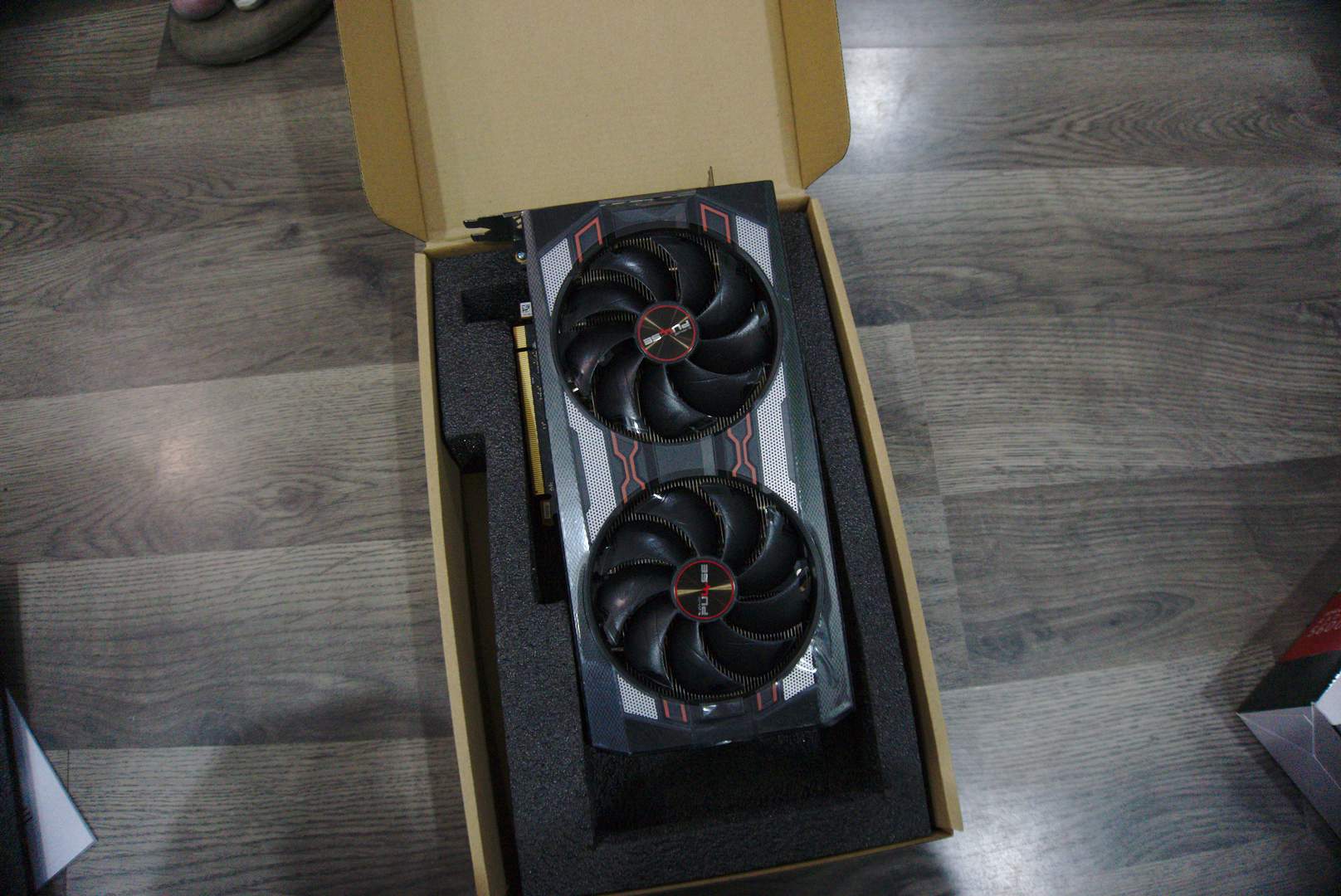Sapphire Pulse 5600XT: A BIOS update that makes it.
[Hardware Meta is a participant in the Amazon Services LLC Associates Program. As an Amazon Associate, we earn a commission from qualifying purchases. This article may contain affiliate links.]
Coming off the back of our previous 5600XT review by way of the XFX THICC II Pro, we wanted to see what the other vendors brought to the table, given that different vendors provided slightly different BIOS updates. Enter the Sapphire Pulse 5600XT.
Unboxing
The Sapphire Pulse 5600 XT comes well packaged – surrounded by black thick foam, encased in a cardboard box with an outer ‘card stock’ informational sleeve. There are a couple of leaflet pages to act as an installation guide, but not much else in the way of packaging.
The Sapphire Pulse looks sexy
The Sapphire Pulse 5600 XT is a substantial card; by that, I mean it feels surprisingly heavy given its size. As per usual with Sapphire’s “Pulse” line, the 5600 XT is a little more muted than what you might find on their “Nitro+” series of cards, like the 5700 XT. With its solid metal back plate and its thick plastic shroud covering its chunky heat sink, it becomes apparent why it’s so heavy. This card is also color-schemed in a black and gray paint job with red accents and a red LED lit “SAPPHIRE” logo.
It is fitted with Sapphire’s “Dual X-Cooling,” which I think just means two fans. But boy is it quiet. I couldn’t find exact specs on the fans, but they look to measure about 90mm, and by default they are configured with a zero RPM option. Even when running, it’s a quiet card – and at load, while audible, it’s substantially quieter than the Vega 56 this seeks to replace.
Specs
The Sapphire Pulse 5600XT is a little boosted compared to the XFX Thicc Pro II we looked at earlier. For starters, it has a higher game clock (1615MHz) and boost clock (1750MHz). The Sapphire BIOS also pushed the effective memory to 14Gpbs.
Testing the Sapphire Pulse 5600 XT
Our testing methodology was the same as before; running Firestrike and Farcry New Dawn, as well as Unigine’s Superposition, Valley, and Heaven benchmarks.
| Test (1080p) | Sapphire Pulse 5600XT | Vega 56 | XFX Thicc Pro II | Notes |
| Firestrike | 18305 | 17645 | 17408 | Score |
| Farcry New Dawn | 85 FPS | 80 FPS | 82 FPS | High Preset |
| Superposition | 30 FPS | 30 FPS | 29 FPS | Extreme |
| Valley | 116 FPS | 111 FPS | 114 FPS | Ultra |
| Heaven | 154 FPS | 154 FPS | 147 FPS | Ultra |
In our previous article, the Thicc Pro II was +/- 1% of its Vega 56 predecessor. Meanwhile, the Sapphire – with its slightly higher clocks and its memory improvements – consistently meets or beats the Vega 56 at 160w, compared to the Vega 56’s 210w. That is only 10w more than the Thicc Pro II.
Final Thoughts
I think it’s fair to say that the Sapphire card has won me over. We’ve been happy with both of the 5600XTs that have come in to the lab, but if you need just that little bit more, then the Sapphire Pulse variant absolutely does the job. At $315 (at time of writing), the Sapphire Pulse 5600 XT is the 1080p gaming king. If you’d like to grab one as well as support Hardware Meta, use our Amazon affiliate link here.











No shout out for building your new test bench stand?
[…] The new graphics cards are here from both AMD and Nvidia. My pick of 2020 in the 1440p – 4K category would be the AMD RX 6800 XT. It has great rasterization performance, with the ability to take advantage of ray tracing. Overall, the AMD RX 6000 series line up is great – and if found at MSRP is a great value. The RX 5700 XT is a solid 1440p card by Sapphire; our writer Johnny was able to take a look at that GPU. […]
[…] this category, I find that both the Radeon 5600XT and the 5700XT offerings by Sapphire provide awesome performance over their predecessors. If […]